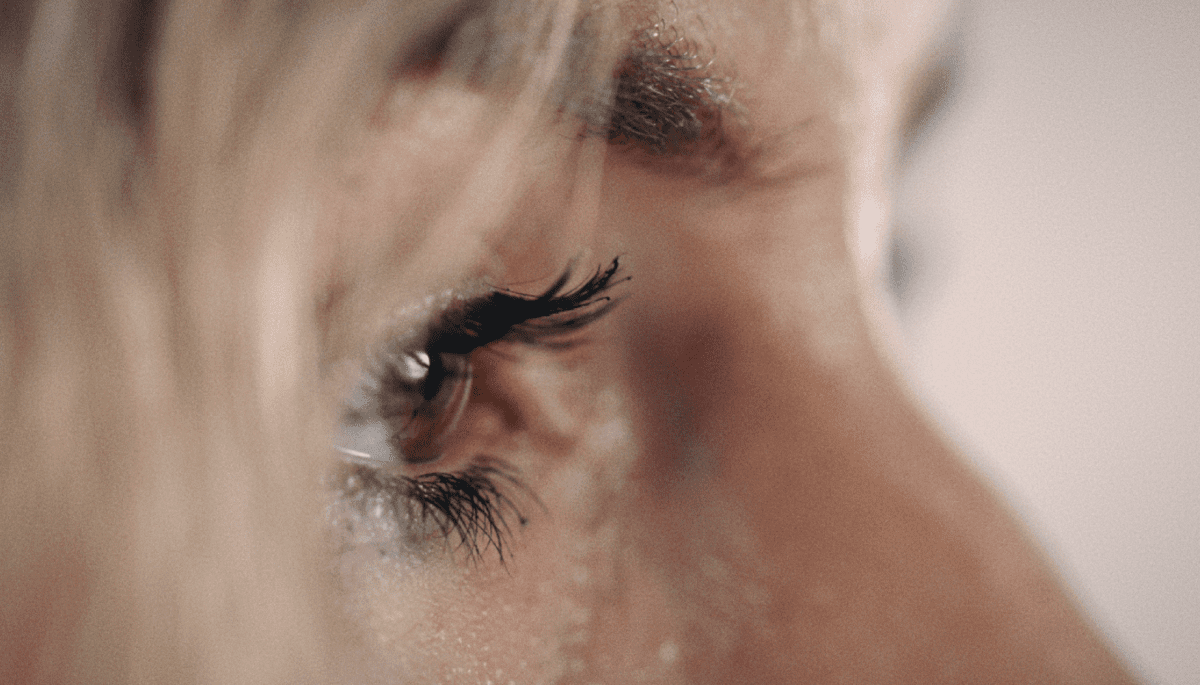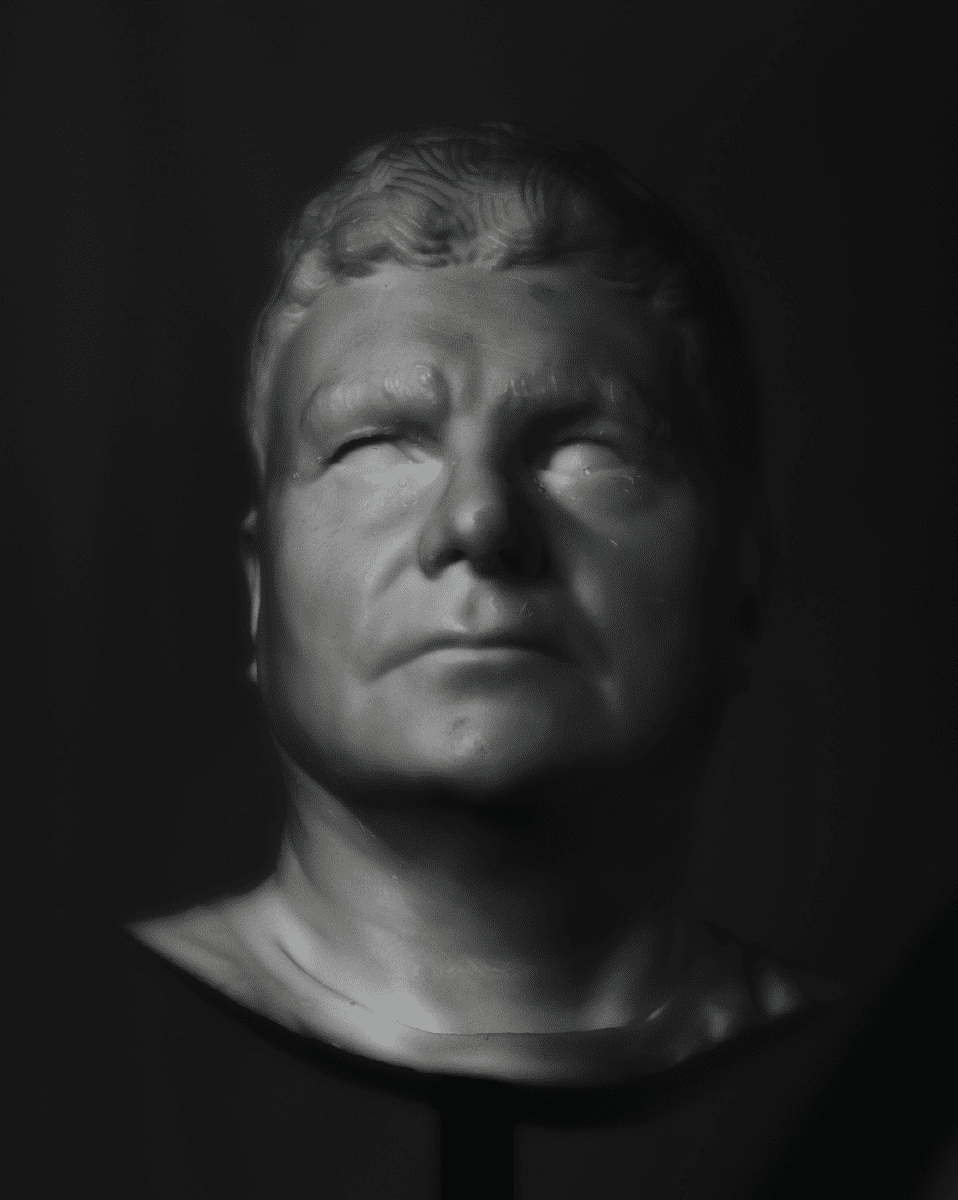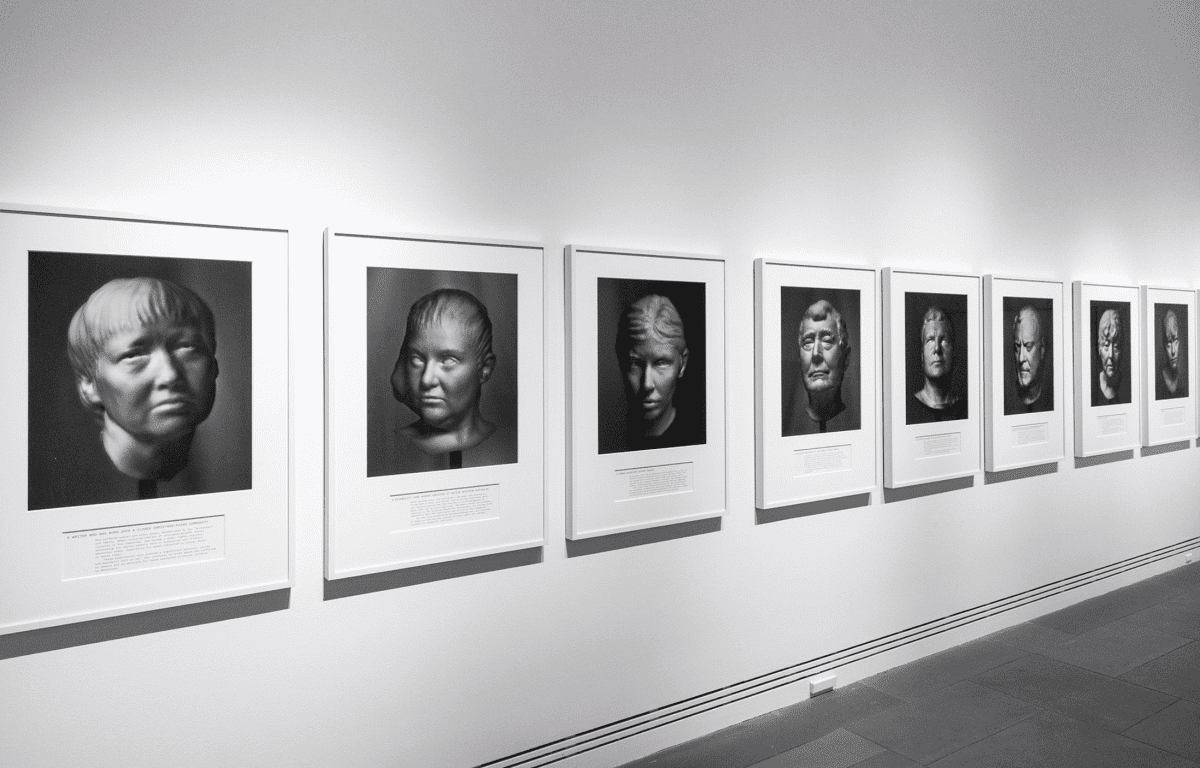
Piercing the veil
A new exhibition at Buxton Contemporary finds a rich complexity in the shadowy terrain between life and death.

Hoda Afshar, still from the video Agonistes, 2020. One-channel digital video, colour, sound, 20 minutes. Courtesy of the artist and Milani Gallery, Brisbane.

Hoda Afshar, Portrait of an officer and lawyer in the Australian Special Forces, from the series Agonistes, 2020. One-channel digital video, colour, sound, 20 minutes. Courtesy of the artist and Milani Gallery, Brisbane.

Installation view: Ramsay Art Prize 2021, featuring Agonistes by Hoda Afshar, Art Gallery of South Australia, Adelaide; photo: Saul Steed.
Growing up in Iran, Hoda Afshar wanted to be an actor. “I had theatre as my first choice and photography as my second and I got into photography—I was actually really disappointed,” the photographer remembers. “My interest in theatre, and how it formed my vision of image-making, is something that I much later realised when I started looking at the work that I made over the years.”
Now based in Melbourne, Afshar is known for her arresting photographic work, which documents the plights of people shunned or punished by authoritarian bodies. The photographer traces her interest in these topics back to childhood, too: “My father was a lawyer, which really directed my interest in social and political issues. He was always working with cases in Iran that were battling against the system, and they were kind of defenseless.”
Afshar’s initial intended path was in war photography, but that changed when she migrated to Australia in 2007 and was struck by the country’s duality. “Australia is a juxtaposition of beauty and violence, and that’s something that is very present in my work,” she says. “For someone like me who comes from a country that is openly and proudly a dictatorship, I found it even more horrific coming here to realise that everyone’s really getting brainwashed into this idea that everything is perfect.”

This idea is evident in Afshar’s 2018 two-channel video Remain, made in collaboration with stateless detainees on Manus Island, including journalist Behrouz Boochani. Filmed over 10 days on the island, the result is a haunting work that positions stories of trauma alongside lush landscape imagery. Her stark black and white portrait of Boochani won the prestigious Bowness Photography Prize in 2018.
The work was Afshar’s response to the way in which the government used images to depict refugees as either “a group of identical victims or dangerous criminals”. Using the same medium of photography, Afshar wanted to return humanity to the men. “Collaborating with the subject is an active part of image-making, and giving them the agency on how to represent this narrative to the camera,” she says.
“It’s one of the experiences that for the rest of my life I will cherish—as painful as it was, it was also a huge learning curve, being one of the rare people who actually saw what was happening. For a couple of years after that, the idea of my freedom was making me want to vomit. I see that work as part of a bigger movement.”
The artist’s latest work, combining film and portraiture, turns the gaze onto whistleblowers. Commissioned for PHOTO 2021, and with a video component showing in Destiny Disrupted at the Granville Centre Art Gallery, Agonistes spotlights nine people who have exposed misconduct within Australian institutions. Afshar used 3D printing techniques to create busts, winding her interest in theatre back into her work. The busts render the subjects’ eyes blank, creating a striking visual statement and projecting the idea of what Afshar calls the “broken hero”. The portraits were hung outside St Paul’s Cathedral in Melbourne in early 2021.

“Unlike the Remain portraits, I didn’t want to bring the character of the individual forward—it was more about the action,” she says. “I wanted to compare it to the Greek tragedies. I was thinking about tragic theatres of the time, when they were all in open outdoor spaces, and people would go and watch the play, and at the end of the night they would sit around and talk about the issues that were addressed in the play.
“The text at the bottom of each image describes the facts about what each of these individuals dealt with and what they saw; I wanted people to stand around and read it. By bringing all these different stories together in one space, people respond to it differently.”
As a migrant herself, Afshar’s work is driven by the idea of otherness; it has also been a way for her to understand her own identity. “The interest comes from the role that images play in the construction of different categories of marginality,” she says. “It’s about recognising the power that images have in perpetuating certain modes of thinking, and how we can use the same level of power to modify or dismantle that.”
The intersection of theatre and photography comes alive in Afshar’s work through what she chooses to reveal, or hide, through the lens. “If you think about the limitation of the frame, if the scene is not a stage, the way that the photographer frames it is a form of staging,” she says. “When we say ‘documentary’, we somehow associate it with truth—it means that if a work is documentary it’s a reflection of the truth of that event, but if it’s staged, it’s not. I’m trying to challenge that with my work.”
Just Not Australian
NorthSite Contemporary Arts
5 November—5 February 2022
Destiny Disrupted
Granville Centre Art Gallery
10 February—1 May
This article was originally published in the November/December 2021 print edition of Art Guide Australia.